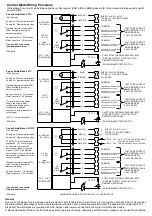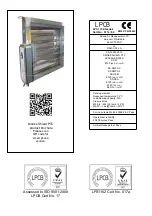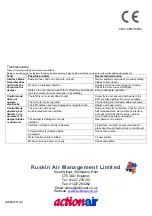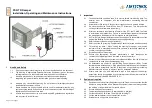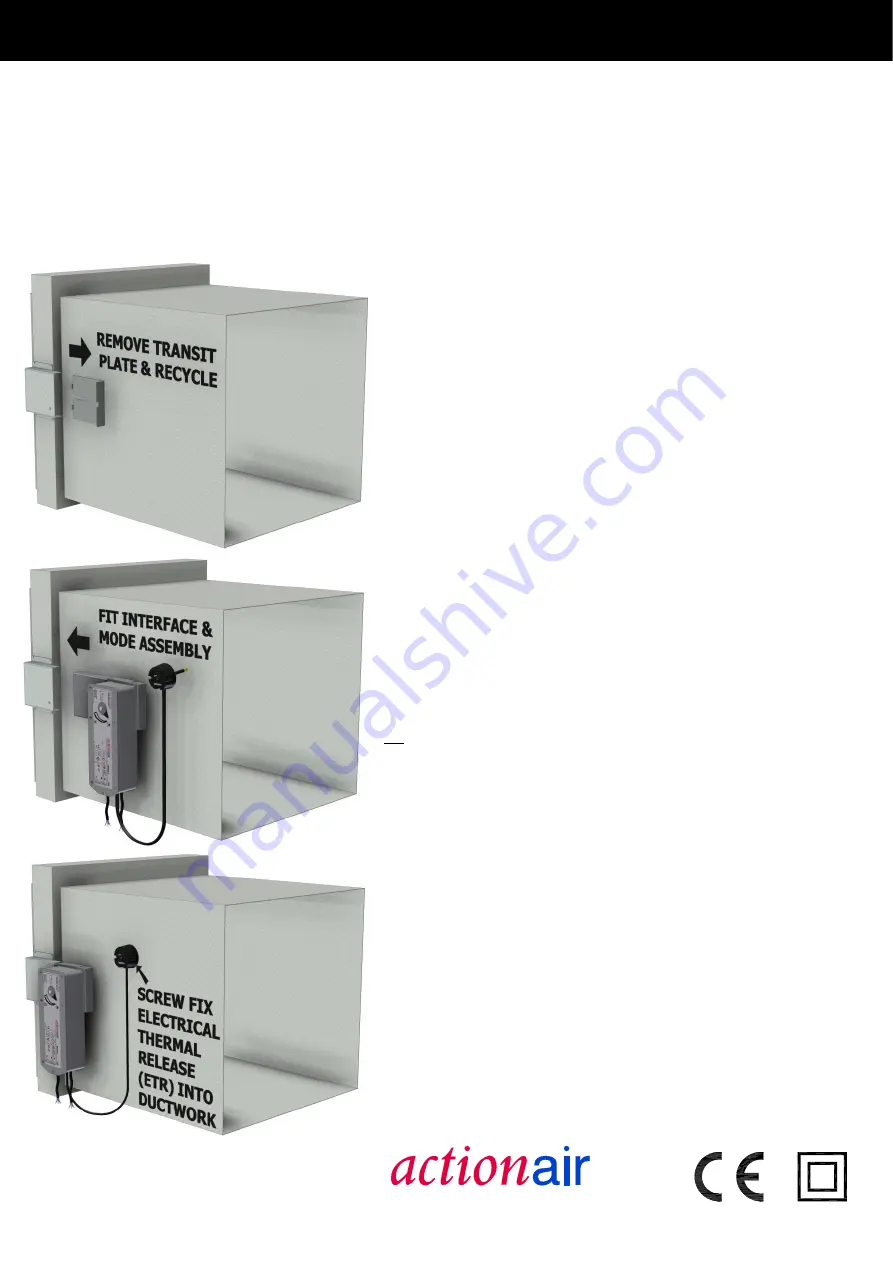
Smoke Shield PTC - 'E S'
RATED FIRE DAMPER
(Fire & Smoke barrier)
Installation, Operating & Maintenance Instructions
www.actionair.co.uk
For clarity, damper not shown installed in
supporting wall construction, please refer
to the Actionair approved Fire and Smoke
Dampers Installation Manual. The latest
version can be found on our website:
www.actionair.co.uk
Health and Safety
All wiring should be carried out in accordance with the wiring details provided, the IEE and BS regulations, by a competent person.
Care must be taken when installing and inspecting dampers, as they are likely to close without warning due to loss of electrical
power, or a temperature rise in the ductwork. This is their prime function.
Do not introduce any items, fingers or limbs between the blades.
Larger dampers are heavy and must be handled in accordance with current regulations and good practice.
July 2013
SmokeShield PTC Damper Control Modes
Control Mode Installation Procedure
Remove transit plate and recycle.
Slide the interface and mode assembly into the shroud, ensuring that the
slots in the interface casing and the drive coupling, located on the rear of the
interface, are in line.
Push the assembly fully home until the interface sprung retaining pin
engages through the locating hole in the damper shroud (
snap
lock™).
The control mode can be fitted in any of three orientations i.e. Vertically
down, Horizontally and Vertically up, if you have an space restrictions. This
can easily be carried out by;
Remove and retain the screw (8mm A/F) and washer, through the
position indicator on the control mode.
Remove the control mode and location plate.
Taking care not to disturb the drive hexagon, replace the location
plate, and control mode in the new orientation.
Replace the washer and screw tight (Max 5Nm)
Select a suitable position for the Electrical Thermal Release (ETR)
to be mounted through the ductwork. Ideally this should be in the top half of
the duct and/or above the level of the interface.
Apply the self-adhesive template (located on the rear of the ETR) and drill
the necessary holes (Ø3mm & Ø9.5...Ø11mm).
Push the ETR through the duct and ensure that both screws are used to
hold it in position. Both screws should be tightened fully to ensure that both
sections of the ETR are closed together. This is a safety feature and should
both sections not be closed the unit will not operate.
For ductless installations the ETR should be fitted onto the damper spigot
(not casing) above the damper interface shroud, and in accordance with the
fitting instructions.
If the ETR is not fitted in the exact manner described above, the unit
will not operate.
The damper should be manually reset and released using the winder
provided, to ensure that correct mechanical operation is achievable.
It is possible to mechanically lock open the SmokeShield PTC damper to
allow air to pass through it by using the winder provided. This may be
necessary if electrical power is not yet available. However, the ETR is not
operable in this instance and the damper will not release automatically
should the temperature rise or a fire occur.
The unit must be wired as detailed.
When power is available, the unit must be checked for correct
electrical operation. Power on to reset, power off to release.
The unit must also be checked by pushing and holding the test switch on the
ETR to confirm that the damper releases. When pressure is removed from
the switch, the damper resets. This may also be done after the initial
installation test, to provide periodic operation of the damper to simulate
actual fail-safe release under smoke/fire conditions.
The ETR cable must not cut to shorten or lengthen, and care must be taken
not to damage it. Either will render the unit inoperable and void any
warranties. This is due to a built in safety feature.
0832-CPR-P0002


